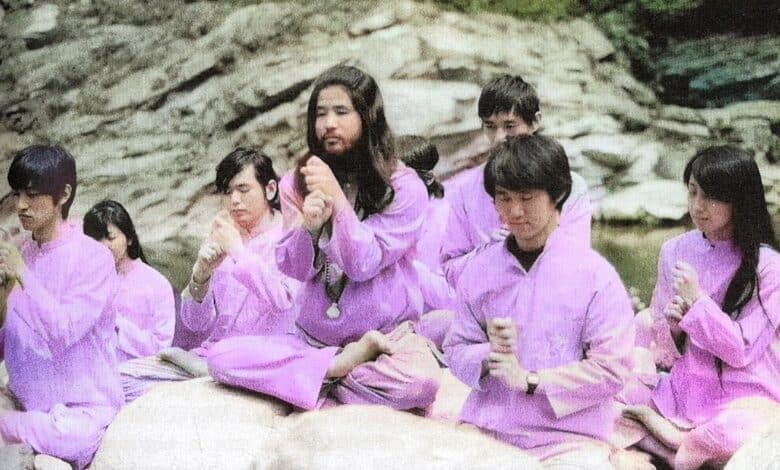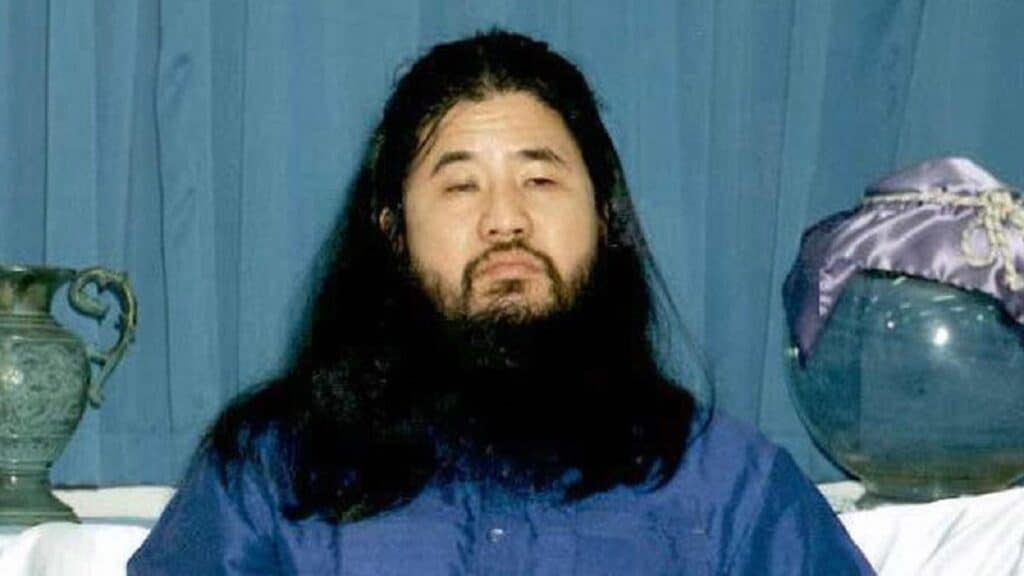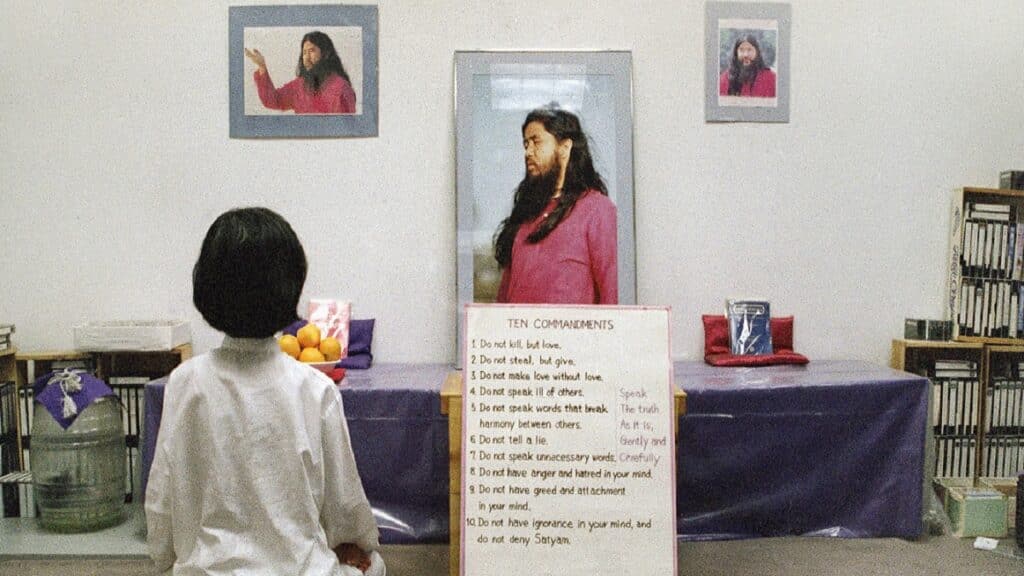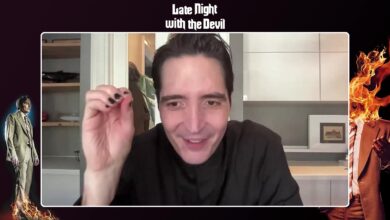
Aum: The Cult at the End of the World tells the story of the origins and rise of Aum Shinrikyo, the doomsday cult behind the deadly sarin attack on a Tokyo subway in March of 1995. The film opens with the attack itself, horrifically portrayed through news footage, surveillance, and dispatch recordings. Then, filmmakers Ben Braun and Chiaki Yanagimoto go back in time to explore what led up to the events of that day.
Aum Shinrikyo, founded by the charismatic Shoko Asahara, was originally a yoga practice that followed Asahara as a guru. Aum: The Cult at the End of the World does a good job at painting a picture of Asahara as someone that people would follow. Asahara was a monster, no doubt. But the filmmakers show us, through clips of Asahara’s many talk show appearances and commercials, how someone might be lured into following him. They also bring up a few instances of events from his childhood that may have played a role in shaping what he eventually turned into.

Braun and Yanagimoto also include many interviews from people from both sides of the story. We hear from friends and family of lawyer Tsutsumi Sakamoto. His opposition to the activities of Aum lead many to believe the cult was responsible for his eventual disappearance. They also recount assassination attempts based on their support of Sakamoto. On the other hand, they have interviews with Fumihiro Joyu, who was one of Asahara’s main right-hand men. Unfortunately, I found his interviews to be disappointing. He may not see himself as a villain, but the filmmakers didn’t ask him any questions that would challenge that.
The most intriguing interview in Aum: The Cult at the End of the World, for me, was that of Yoshiyuki Kouno. Kuono was falsely blamed by for a sarin attack that predated Aum’s subway disaster due to a boggled investigation. And is the best illustration of the film’s clearest message: that authorities and law enforcement ignored many red flags in regards to Aum Shinrikyo’s activities. The cult was basically operating in plain sight, and if certain organizations would have intervened, many lives could have been saved.

As much as the subject of this documentary fascinates me, I felt like Aum: The Cult at the End of the World barely scraped the surface of the story. The film opened with the subway attack, yet did little to follow up with the actual day itself. Also, the cult’s expansion into Russia is mentioned, but not explored very much. The filmmaking itself was well-done, but I would have liked a deeper dive. As much as the subject of this documentary fascinates me, I felt like Aum: The Cult at the End of the World barely scraped the surface of the story. The film opened with the subway attack, yet did little to follow up with the actual day itself. Also, the cult’s expansion into Russia is mentioned, but not explored very much. The filmmaking itself was well-done, but I would have liked a deeper dive. This film is a great introduction to Aum Shinrikyo, but for those interested, I would highly recommend further research.
Score
As much as the subject of this documentary fascinates me, I felt like Aum: The Cult at the End of the World barely scraped the surface of the story. The film opened with the subway attack, yet did little to follow up with the actual day itself. Also, the cult's expansion into Russia is mentioned, but not explored very much. The filmmaking itself was well-done, but I would have liked a deeper dive.



